
|
Pages: << Back 1 2 3 4 5 6 7 8 9 10 Next >>
_____________________________________ Interest in intercollegiate sports remained high. DePauw joined the Buckeye Conference in 1930 and, before dropping out two years later, competed actively with such Ohio colleges as Denison, Ohio Wesleyan, Wittenberg, Cincinnati, and Miami University of Ohio. In 1932 the Chicago, Indianapolis and Louisville Railroad Company (the "Monon") donated one of its locomotive bells to be held by the winner of the annual football game between DePauw and Wabash, an ancient rivalry. Since the game played in the fall of 1932 ended in a 0-0 tie, neither institution could claim the prize. It remained for the near-legendary undefeated, untied, and unscored-upon team of 1933 coached by Raymond "Gaumey" Neal to bring the Monon Bell home to Greencastle with its final victory of the season in Crawfordsville.
DePauw's "apostolic succession" was renewed when Oxnam
was elected a bishop of the Methodist Episcopal Church in 1936,
making him the last of six presidents to attain that office. His
subsequent long career as a major ecclesiastical leader brought
him national and international acclaim. At times he remained a controversial
figure, as during his spirited defence of civil liberties in the
1950s. He died in 1963. Among his and his wife's generous contributions
to the university was a valuable collection of Bret Harte first
editions presented to the library in 1958. Oxnam himself published
a total of 16 books in his lifetime, six of them while president
of DePauw. In later years he apparently had second thoughts about
his administration of the university. According to Jerome
Hixson's memoir, Past Perfect, Oxnam stated on his return to
campus three decades after leaving the presidency: "Oh, how
I wish I could come back and do it all over again! There are so
many things I would have done differently."
The
person ultimately selected to become the next president of DePauw
was Clyde E. Wildman, who appeared to fit these criteria very well,
except for the fact the he had been ordained to the Methodist ministry.
Both Wildman and his wife, Forest Kyle Wildman, were DePauw graduates.
He had also earned an S.T.B. and Ph.D. from Boston University, making
him the first president of this institution to hold an earned doctorate.
Currently a professor of Old Testament at the Boston University
School of Theology, Wildman had spent most of his career as a college
or seminary teacher, with a brief stint as an administrator. Moreover
he had served a term as president of the Boston University chapter
of the A.A.U.P., not an insignificant item in light of recent events
at DePauw. Clearly the new president brought with him an intimate
knowledge not only of the university itself but also of faculty
governance and Methodist educational institutions. The
1936-37 academic year also marked the 100th anniversary of the founding
of the university. In honor of the centennial the university sponsored
a series of four conferences entitled "Life Looks at the College."
Attending the first three were representatives of the churches,
the business community, and the legal, medical, and teaching professions.
The last conference was devoted to the role of women, a highly relevant
topic in view of the 70 years of coeducation at DePauw. In 1937
William W. Sweet, a former head of the history department, published
the first full-length history of the institution under the title
Indiana Asbury-DePauw University, 1837-1937. Poet Max Ehrmann from
the class of 1894 composed a "Centennial Ode" prophesying
a "glorious rebirth" of Alma Mater.
|
Depauw University e-history | E-mail comments to: archives@depauw.edu

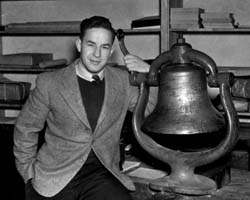
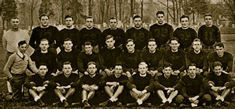
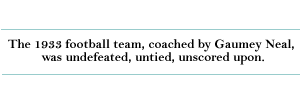
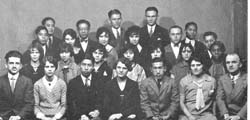
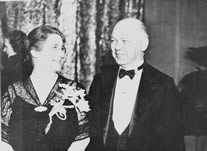


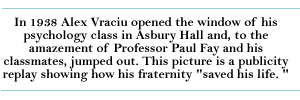
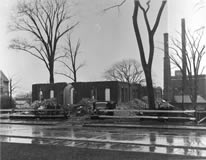
 ____________________________________________
____________________________________________